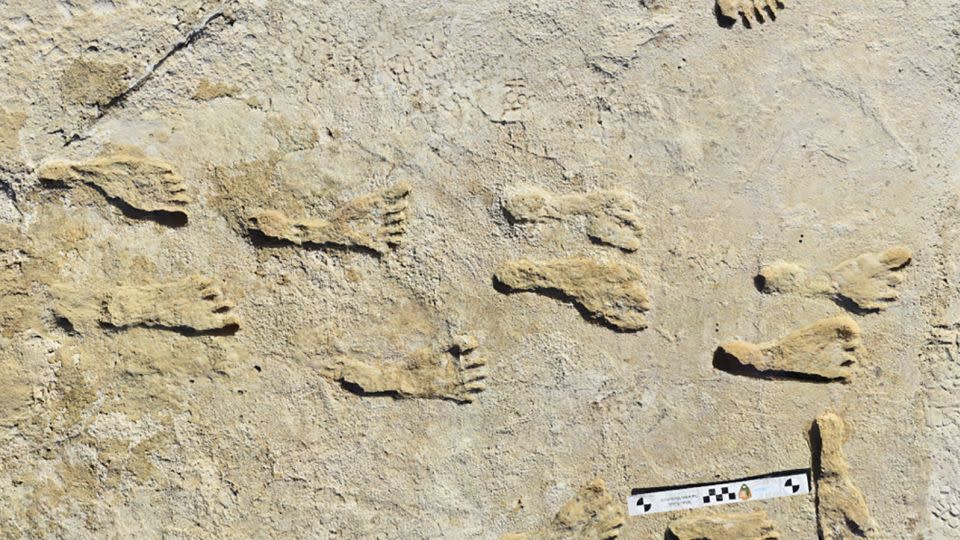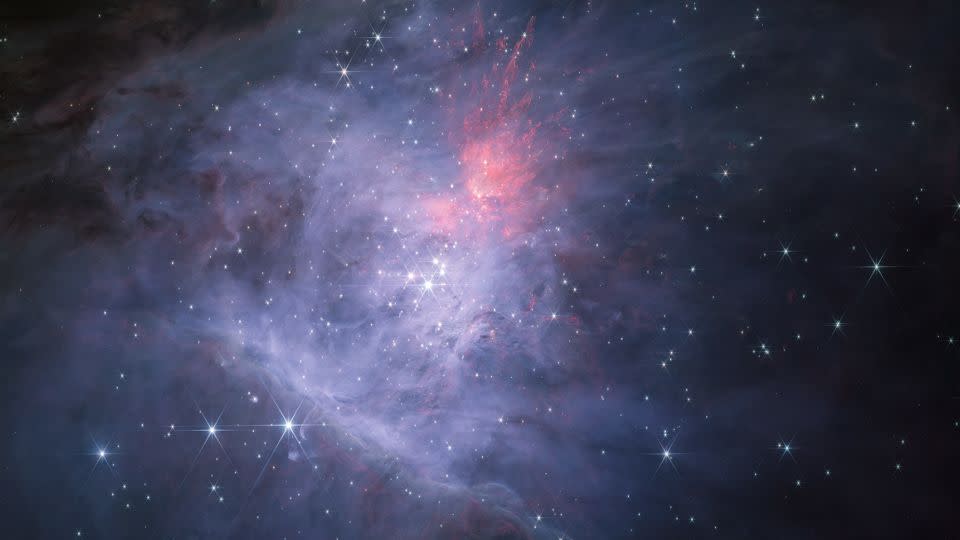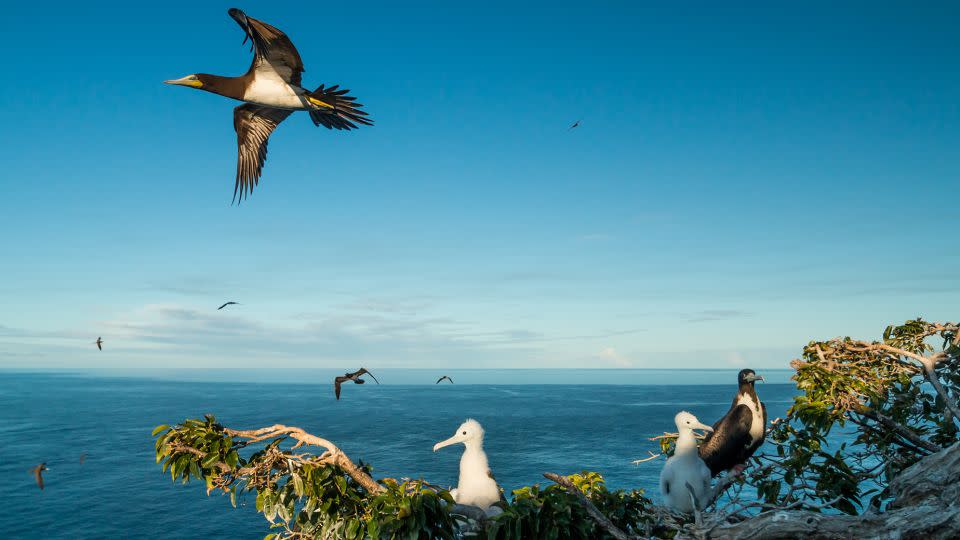How ancient footprints rewrote a chapter of early human history
Editor’s note: A version of this story appeared in CNN’s Wonder Theory science newsletter. To get it in your inbox, sign up for free here.
As humans, we’ve left our mark on every place we’ve been — including other worlds.
Rover tracks crisscross the red surface of Mars, and iconic boot prints from the Apollo era still dot the moon.
Closer to home, footprints across the globe have revealed the presence of different species over time, including dinosaurs kneeling in the mud and the tracks of unknown human ancestors.
The impressions present an intimate reminder of a specific moment, a time capsule of the paths taken by those who came before us.
And for scientists, preserved footprints can lead to unexpected journeys into the past that rewrite history.
Once upon a planet

When the discovery of 61 fossilized human footprints found in New Mexico’s White Sands National Park was first announced in 2021, the ancient find changed the timeline of early humans living in the Americas.
The footprints were estimated to have been pressed into the mud between 21,000 and 23,000 years ago, based on dating of seeds from an aquatic plant preserved along with the tracks.
Some scientists questioned the age of the footprints, but new research has provided findings that point to the same time frame. Our ancestors arrived well before climate conditions would have made it impossible to reach North America, according to the new study.
Scientists still debate when and how prehistoric people arrived in the Americas, and archaeological evidence has been hard to find. That’s why the footprints represent such a crucial missing chapter in human history.
Trailblazers
Bright minds behind scientific advances in chemistry, physics, and physiology or medicine were awarded Nobel Prizes this week.
Quantum dots may not sound familiar, but the tiny particles uncovered by a trio of scientists are used in LED lights and TV screens as well as by surgeons when removing cancer tissue.
Meanwhile, short pulses of light, which rely on lasers, can measure changes in electrons. The technique, created by three physicists, gave “humanity new tools for exploring the world of electrons inside atoms and molecules,” according to the Nobel committee.
Drs. Katalin Karikó and Drew Weissman’s work on mRNA vaccines was critical during the Covid-19 pandemic, contributing “to the unprecedented rate of vaccine development during one of the greatest threats to human health in modern times,” the committee said.
Across the universe

Astronomers used the James Webb Space Telescope to peer inside the glowing Orion Nebula and found something completely unexpected: pairs of planetlike objects.
The pairs, dubbed Jupiter Mass Binary Objects, or JuMBOs, have masses between 0.6 and 13 times the mass of Jupiter and appear to defy some fundamental astronomical theories. And scientists aren’t sure how the JuMBOs formed or why they’re inside the nebula.
“The main thing that we learn from this is that there is something fundamentally wrong with either our understanding of planet formation, star formation, or both,” said Samuel G. Pearson, a research fellow at the European Space Agency.
Future observations with Webb could shed more light on the composition of the objects, potentially providing clues about their origin story.
Other worlds
On October 12, NASA is aiming to launch its first mission to explore Psyche, an intriguing metal world that exists in the main asteroid belt between the orbits of Mars and Jupiter.
Astronomers believe the asteroid, shaped like a lumpy potato, could be the iron-rich core of an early planetary building block or something else entirely — and the namesake Psyche spacecraft’s observations could finally uncover the answer.
Meanwhile, China has announced its future lunar exploration plans, including a mission to return the first samples from the far side of the moon to Earth.
Mission critical

Redonda, a small island in the Caribbean Sea, is a haven for wildlife. But invasive species nearly destroyed this once pristine paradise.
First documented by Christopher Columbus in 1493, Redonda was explored and then exploited for its resources in the 1600s. Along with humans came invasive species such as rats that preyed on native species and feral goats that decimated the island’s plants.
Rats came to rule the island after it was abandoned at the outbreak of World War I. Without vegetation to hold it together, the landmass began to crumble into the sea.
Environmental groups stepped in to help in 2016, removing invasive species — and that was all it took for Redonda to come back to life.
Take note
Here’s some good news you can use:
— The birth of a Sumatran rhino in Indonesia is a hopeful step for a species that has nearly been hunted to extinction.
— Scientists popped open the OSIRIS-REx canister and encountered “the very best ‘problem’ to have” — an abundance of material collected from a sample from the asteroid Bennu.
— A playfully louche monkey making a mustache with his tail and a swamp turtle that appears delighted by a dragonfly are just a couple of the images selected as finalists for the Comedy Wildlife Photography Awards.
— On October 14, a stunning annular solar eclipse will create a “ring of fire” in the sky visible to millions across the Americas — and it won’t make another appearance until 2046.
Like what you’ve read? Oh, but there’s more. Sign up here to receive in your inbox the next edition of Wonder Theory, brought to you by CNN Space and Science writers Ashley Strickland and Katie Hunt. They find wonder in planets beyond our solar system and discoveries from the ancient world.
For more CNN news and newsletters create an account at CNN.com

